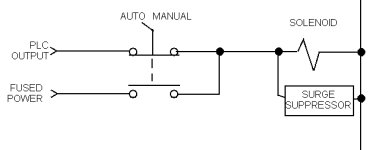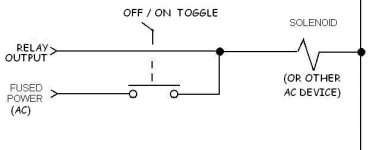Hey all, I have an organic greenhouse on my property and wish to automate it as much as I can. So, if at all possible could anyone help me figure out what I would need to buy and maybe some help walking me through the setup.
Here is how I see the setup looking:
Outputs need:
3 - 240v each output will have a max draw of 5 amps, on a timer
1 - 240v for water pump 0.5 amps that is on a timer
1 - 120v for exhaust fan 1 0.8 amps that is on a timer
1 - 120v for exhaust fan 2 0.8 amps that is on a timer
1 - 120v for water pump ~0.5 amps that is running full time
1 - 120v this output would be powering a water chiller
1 - 120v dehumidifier that will turn on/off to maintain humidity
1 - 120v CO2 generator
1 - 120v A/C unit 5.5 amps
1 - 120v PH pump
There may be a need to expand the number of outputs, 240v and or 120v.
I have a sub-panel with a 100 amp main circuit
2 - 30 amps 240v circuits
3 - 15 amps 120v circuits
So power is not a problem.
I also need some inputs.
1 - humidity sensor
1 - room temp sensor, maybe 2 sensors that give an average temp of the greenhouse
1 - Co2 sensor
1 - water temp sensor
1 - PH sensor
1 - Conductivity sensor
1 - water level sensor
2 - Air temp sensor
I know it may sound complex but organic farming is very time consuming. The more control I have over my environment the better. That is why I have to monitor so many things. I have it running now using cobbled together sensors, timers and plugs. I know a system like this will cost some cash, but it is an investment in my business. The reliability, expandability, and versatility of a PLC makes it sound like a winner. I have looked into some great little PLC system that would make the wiring of the system rather easy.
http://www.eaton.com/EatonCom/Market...lays/index.htm
I have been looking at the 700 or 800 EZsoft Controllers from Eaton. They have a lot of input/outputs, if you get the EZ expansion mods. I know there are other way to do it but using the Eaton controllers would be simpler. In the end, I need to have ability to monitor the environmental sensors in real time, with a PC. The programing will be a whole other posting, but first I need to find out what hardware I need, and all that good stuff. Well I hope to hear from someone.
Here is how I see the setup looking:
Outputs need:
3 - 240v each output will have a max draw of 5 amps, on a timer
1 - 240v for water pump 0.5 amps that is on a timer
1 - 120v for exhaust fan 1 0.8 amps that is on a timer
1 - 120v for exhaust fan 2 0.8 amps that is on a timer
1 - 120v for water pump ~0.5 amps that is running full time
1 - 120v this output would be powering a water chiller
1 - 120v dehumidifier that will turn on/off to maintain humidity
1 - 120v CO2 generator
1 - 120v A/C unit 5.5 amps
1 - 120v PH pump
There may be a need to expand the number of outputs, 240v and or 120v.
I have a sub-panel with a 100 amp main circuit
2 - 30 amps 240v circuits
3 - 15 amps 120v circuits
So power is not a problem.
I also need some inputs.
1 - humidity sensor
1 - room temp sensor, maybe 2 sensors that give an average temp of the greenhouse
1 - Co2 sensor
1 - water temp sensor
1 - PH sensor
1 - Conductivity sensor
1 - water level sensor
2 - Air temp sensor
I know it may sound complex but organic farming is very time consuming. The more control I have over my environment the better. That is why I have to monitor so many things. I have it running now using cobbled together sensors, timers and plugs. I know a system like this will cost some cash, but it is an investment in my business. The reliability, expandability, and versatility of a PLC makes it sound like a winner. I have looked into some great little PLC system that would make the wiring of the system rather easy.
http://www.eaton.com/EatonCom/Market...lays/index.htm
I have been looking at the 700 or 800 EZsoft Controllers from Eaton. They have a lot of input/outputs, if you get the EZ expansion mods. I know there are other way to do it but using the Eaton controllers would be simpler. In the end, I need to have ability to monitor the environmental sensors in real time, with a PC. The programing will be a whole other posting, but first I need to find out what hardware I need, and all that good stuff. Well I hope to hear from someone.
Last edited:





